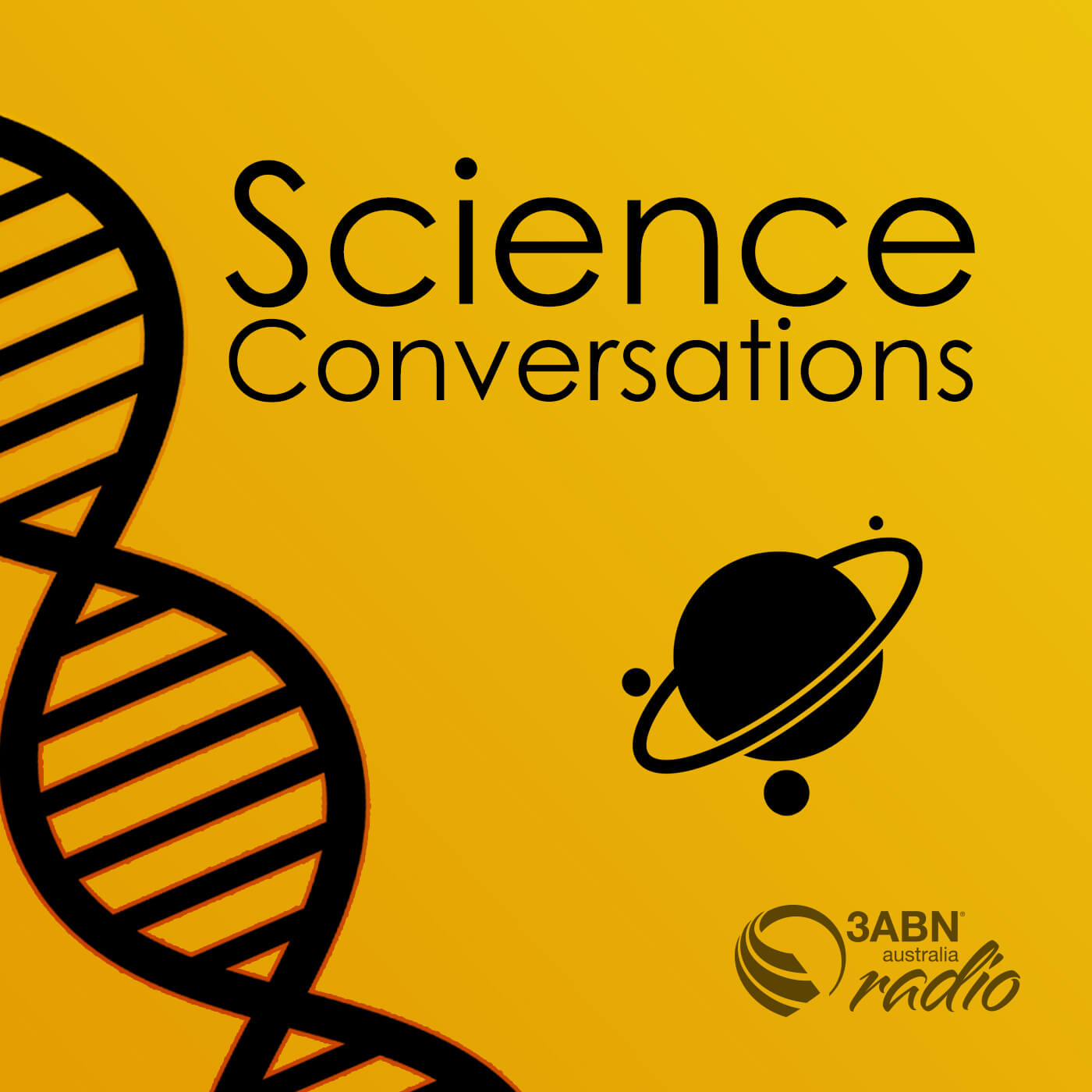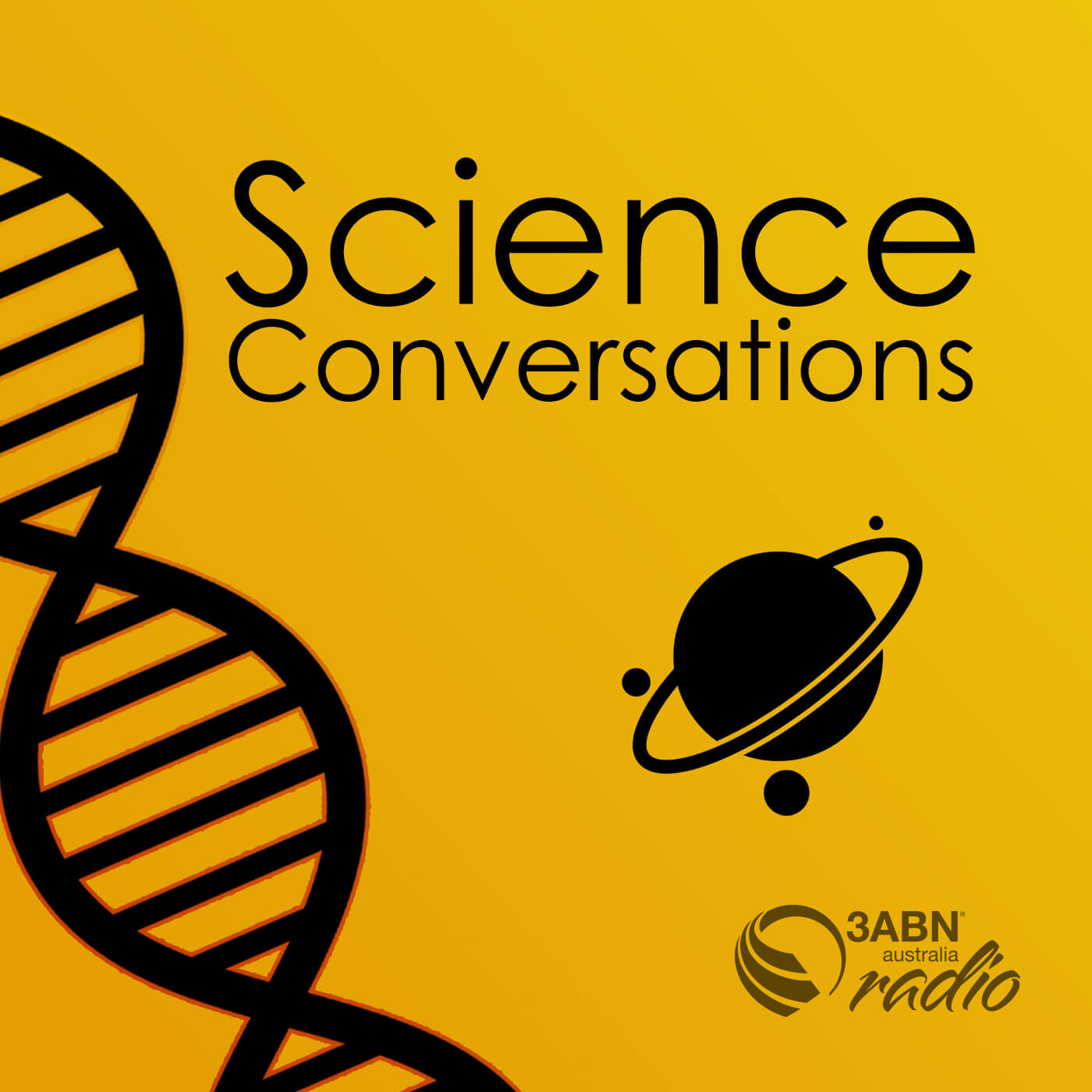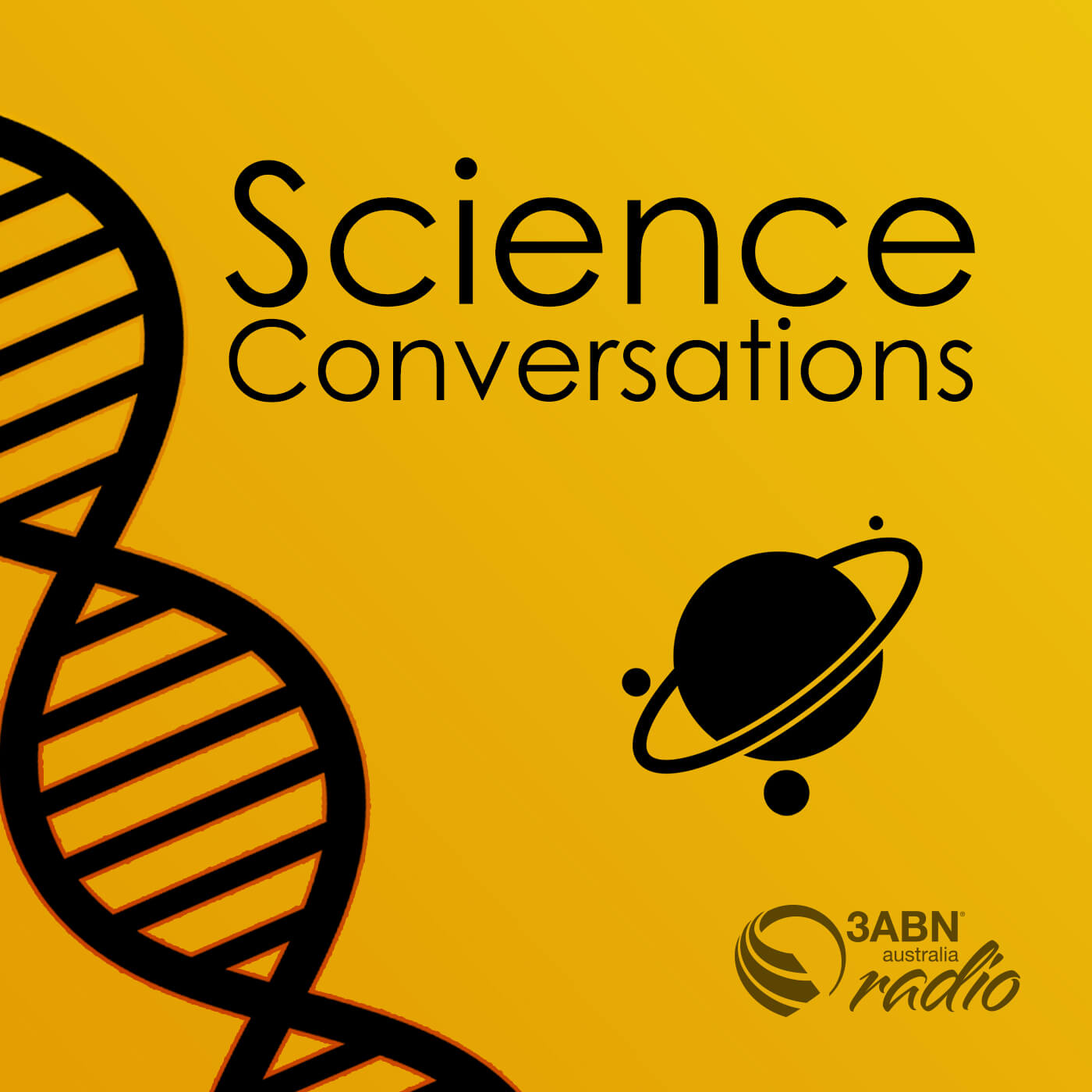Episode Transcript
SPEAKER 1
Welcome to Science Conversations. I'm Kaysie Vokurka. Are fossils evidence for evolution? Joining me to discuss part three of this topic is Dr. John Ashton. Thank you for being with us once again, John.
SPEAKER 2
Hello, Kaysie.
SPEAKER 1
Dr. John Ashton has written a book entitled Evolution Impossible: 12 Reasons why Evolution Cannot Explain the Origin of Life on Earth, a fascinating read with referring to chapter five. in this program. So, John, what evidence do fossils provide that show us that they must have been deposited more recently as opposed to millions of years ago?
SPEAKER 2
Yes, well, I guess this is a question that is raised all the time. Where's the evidence? You say, you know, Noah's flood was only thousands of years ago. Where's the evidence for that? Well, in the late 1990s, powerful evidence for that primofacies evidence was discovered when they actually discovered soft tissues remains in dinosaur remains. So we have dinosaurs essentially, according to conventional thinking, became extinct 65-70 million years ago. And they've found the remains of these dinosaurs preserved, buried, and when they've cut them open, the remains and the fossils they've actually found soft tissues such as cartilage and blood and the proteins, these sort of things. Now, the fascinating thing about this is that these sort of soft tissues would break down very quickly because they involve long chain molecules. And we know from the biochemistry where we've looked at, say, for example, collagen.
SPEAKER 1
Yeah.
SPEAKER 2
If we collagen at, say, 10 degrees centigrade would break down in about 20,000 years. At 20 degrees, it would break down in about 10,000 years. So the fact that we find these long chain molecules points to the fact that the dates of millions of years have got to be way out. These soft tissues such as hemoglobin and DNA that they found now fragments of DNA Very complex molecules, very vulnerable to decay and breakdown, chemical breakdown. They've found sections of these intact. And again, this points to a very short time frame, a very short time frame. Now, of course, this evidence was highly, highly disputed at the time. And essentially, other scientists said, look, obviously there's something wrong with the histology that you're doing there. You're not identifying these molecules correctly. and so there was an expedition planned from science from the university, I think, of North Carolina, Montana University and also Harvard and one of the other research schools. And they went out to an area in the Morrison Formation from memory. It had never been disturbed. They had an excavator. They dug down with the excavator until they found, began finding some fossils. I think they hit a fossil bed about seven metres down. They extracted a large thigh bone from a type of dinosaur. They cut it up and inside they found soft tissue. And that report was published in the journal Science. And of course that really showed that soft tissue was there. Now of course the argument is, oh well somehow it's preserved. Maybe there are preservatives there that are naturally preserving it. But when we look at the biochemistry of these molecules and understand the chemistry of them. They can't last, they break down, they deteriorate. These long polymer molecules can't stay intact like that for those long periods of time.
SPEAKER 1
I mean, you mentioned 20,000 years. Like that is nowhere close to even a million years.
SPEAKER 2
Yeah, it's so far.
SPEAKER 1
And you're talking 65 million years is what was the thought. Like how do you get from 20,000 to 65 million?
SPEAKER 2
Yeah, yeah, yeah.
SPEAKER 1
That'S a big story.
SPEAKER 2
That's a long time for those chemical molecules to remain intact under those conditions there. And it's not as if they were, you know, Frozen, you know, seven meters down the ground temperature is, you know, pretty stable. And probably around 10 degrees is probably a realistic value. I'm not too sure of the climate there. Maybe even higher, actually. Yeah. Another fascinating year I was. I was traveling one time and I watched a documentary on television about recovering the remains of a large marine lizard, again dated 70 million years old from this island way up near the North Pole. And so that is under, you know, colder conditions. And I later read the report that was published on Plus One where they extracted again soft tissue from the remains of this dinosaur. They were able to remove their head. I remember seeing that featured in the documentary. But it was quite fascinating when they carbon-14 dated the soft tissue that came out about 25,000 years. Now we'll talk about carbon-14 dating later. Yeah. But again, nowhere near the 70 million years. And there's a reason why Carbon-14 dating gives us longer dates well, which we'll talk about later. But again, this is all evidence confirming these are very, very short ages. They've found soft DNA remains from leaf tissue, from so many other things now, these long polymer molecules that have been preserved that are showing that these fossils can nowhere be, can be nowhere near the ages that scientists want to assert in order to support their evolutionary theory. And of course, one of the things they'll come out and cite is, well, hang on, what about radiometric dating? And we'll talk about that in detail later. But I think anybody listening needs to realize that radiometric dating methods have never actually been validated, and that is proven to work for prehistorical dates. And there are reasons for this, which I'll talk about later. And so, yeah, the evidence is overwhelming when we look at the fact that these fossils have to be buried very quickly in order to, you know, to preserve them. And they must be short time, even though even if they're buried, the molecules are still going to break down just on the basis of the kinetics of the way those molecules are and the energy requirements that they have to remain stable.
SPEAKER 1
And it seems like, based on your examples there, that even in different parts around the world, they're finding soft tissue that seem to be of a similar age.
SPEAKER 2
Well, that's true. Actually, after the book was published, there was a report published at the big geosciences convention that was held in Malaysia or Indonesia. I think it was around about 2015. and this was the big international conference. And it was interesting, a paper was presented by some scientists from Europe that had carbon-14 dated soft tissue from 12 different dinosaur remains from around the world. And they all dated at these young ages, and only in the order of 20,000 years. But the fascinating thing that people knew, and we'll talk about this again later as well, The fascinating thing is that after that paper was presented, it was removed from the official program abstracts that were printed later. And still remember, it was the 5:15 session on the Tuesday afternoon. And you still can get copies of the original, but in the official proceedings that were published, that was omitted. So we need to understand that a lot of evidence is there, but a lot of it doesn't get published now. because people are wanting to cling to these long ages. But over time, the evidence is just building as we're finding more and more evidence of soft tissue in the so-called very old, you know, fossil material that all point to very young, young ages.
SPEAKER 1
Now, while we're talking about DNA and this kind of thing, obviously evolution expects a growth in the diversity of genetic information. That's what we'd expect if we Imagine the theory to be correct. Is that what the fossil record suggests? That there's been a progressive increase of diversity?
SPEAKER 2
This is another fascinating area that supports the reverse of evolution because now we've been able to find DNA remains of animals, of older animals that are now extinct but not long that extinct, maybe extinct 10, 20,000 years in modern conventional dating.
SPEAKER 1
Yes.
SPEAKER 2
And what we're finding is that those particular species, so particular type of large zebra that was found, its DNA was extremely complex, had much greater diversity within the DNA compared to, say, a modern plains zebra.
SPEAKER 1
Wow.
SPEAKER 2
That we find on the plains of Africa today. And so there'd been a loss of genetic diversity. And one of the conclusions of researchers that are studying in this area is that in the past often where we thought, oh, there's two or three different species here, in actual fact, this was just one species, but with a very large amount of genetic diversity. And what we're finding is when we compare the genetic DNA codes of these older animals that have survived today, so their descendants are still alive today, there's much less genetic diversity today. So we have lost genetic diversity. Now, evolution requires increase in genetic diversity. What it's arguing is that, yeah, new species are formed because new pieces of code somehow form, they don't know how, to create the new species. But what we're finding, no, there was a massive amount of genetic diversity in particular species in the past that allowed for all these different variations to occur over time as they breed in different ways in different areas and so forth. and this again exactly fits the creationist biblical model that in the beginning God created these animals with massive diversity and over time we've lost this diversity. And of course this is very apparent in agriculture today. For example, when we're looking for different species to try and increase, you know, resistance and this sort of thing, we try and find the older type of species because what's happened with the older samples still living, the older genetic material, because we find again we've lost this genetic material. And one of the fascinating things, for example, is with soybeans here in Australia, we have native soybeans here that seem to be the original soybeans because they're very, they have a huge amount of genetic diversity. And that's why, for example, with the development of, say, for example, Barley Max in Australia, that was a special type of barley with very high levels of resistant starch that was bred. But where was its ancestor? Its ancestor was taken from barley that was sourced from Tibet that was essentially untouched, hadn't been bred, and so again contained that much larger range of genetic diversity that enabled plant breeders then to start again and select the particular traits that they want. whereas if we look at modern varietals and soybeans and so forth, so much of the genetic diversity has been bred out through our modern breeding methods that we've lost these particular traits that certain species had earlier on that may be advantageous today. So this is very prominent in agriculture and it's well known. Rice again, we have native rices in Australia that have very wide genetic diversity, much wider than much of the cultivated rice that is grown around the world today. Again, plant breeders are honing in and researching, studying these particular varieties and looking for traits that we can now use because the genetic diversity has been preserved. So we have the very opposite of evolution occurring. We are losing genetic diversity over time, which is quite fascinating. So here we have primofacer evidence from the fossil record, from the DNA, that the opposite to evolution occurs. We lose genetic diversity. We don't find evidence for evolution from the fossil record. And it's interesting, too, that top paleontologists have recognized this in the past, that we actually don't find the evidence for evolution in the fossil record. What we find are fully formed animals appearing, then they either continue on or they become extinct. We actually don't find evidence for evolution in the fossil record.
SPEAKER 1
Interesting, so fascinating. Thank you for sharing on all those thoughts. And I think in the next set of sessions we're going to be talking about that a little bit more in terms of intermediates in the fossil record. So we'll look at the question, is there any evidence of fossil intermediates? So continuing that topic, be sure to join us for those programs.


